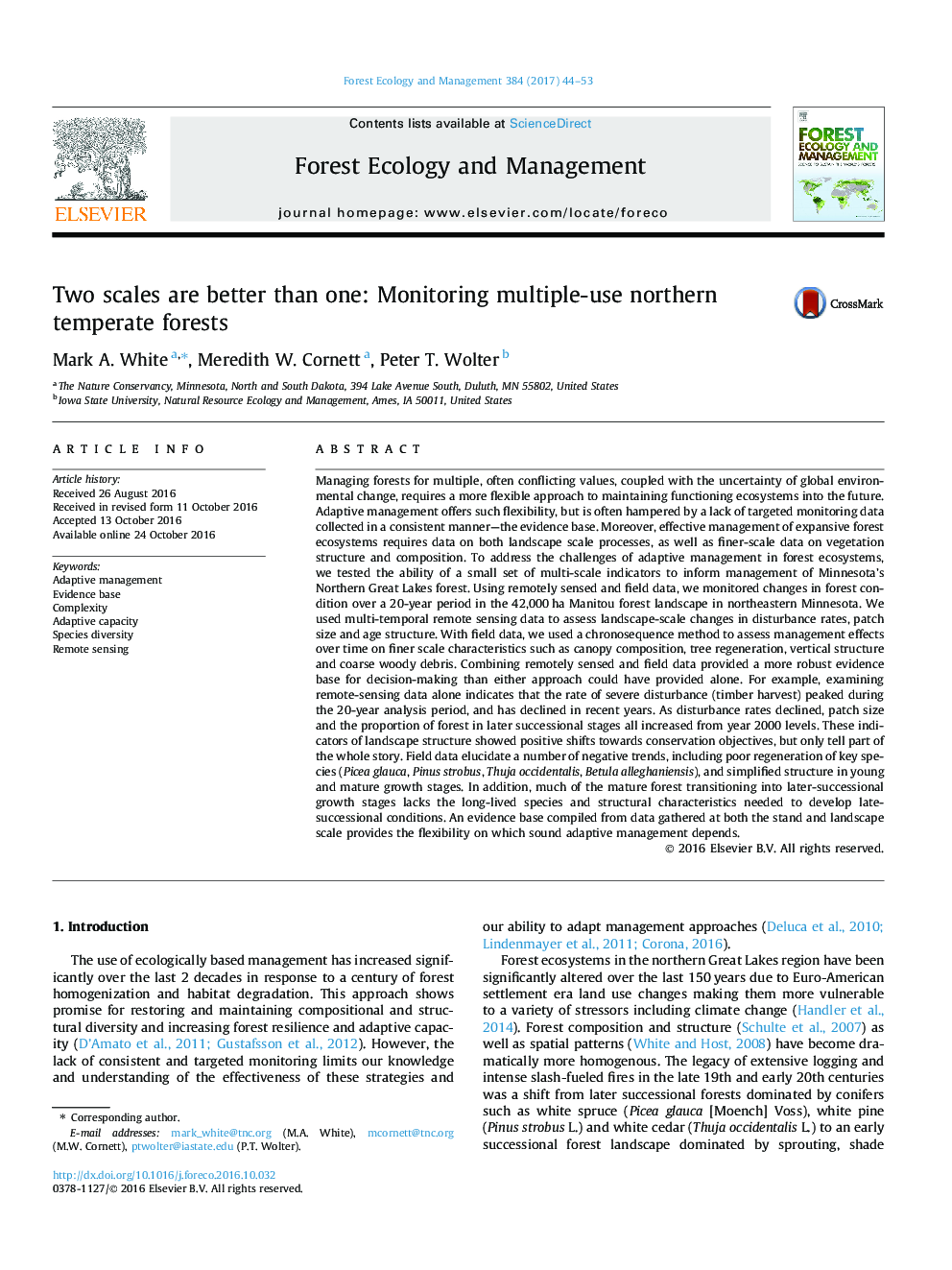| کد مقاله | کد نشریه | سال انتشار | مقاله انگلیسی | نسخه تمام متن |
|---|---|---|---|---|
| 4759608 | 1421374 | 2017 | 10 صفحه PDF | دانلود رایگان |
عنوان انگلیسی مقاله ISI
Two scales are better than one: Monitoring multiple-use northern temperate forests
ترجمه فارسی عنوان
دو مقیاس بهتر از یک است: نظارت چند منظوره جنگل های معتدل شمال
دانلود مقاله + سفارش ترجمه
دانلود مقاله ISI انگلیسی
رایگان برای ایرانیان
کلمات کلیدی
مدیریت انطباقی پایه شواهد، پیچیدگی، ظرفیت سازگاری، تنوع گونه ها، سنجش از دور،
موضوعات مرتبط
علوم زیستی و بیوفناوری
علوم کشاورزی و بیولوژیک
بوم شناسی، تکامل، رفتار و سامانه شناسی
چکیده انگلیسی
Managing forests for multiple, often conflicting values, coupled with the uncertainty of global environmental change, requires a more flexible approach to maintaining functioning ecosystems into the future. Adaptive management offers such flexibility, but is often hampered by a lack of targeted monitoring data collected in a consistent manner-the evidence base. Moreover, effective management of expansive forest ecosystems requires data on both landscape scale processes, as well as finer-scale data on vegetation structure and composition. To address the challenges of adaptive management in forest ecosystems, we tested the ability of a small set of multi-scale indicators to inform management of Minnesota's Northern Great Lakes forest. Using remotely sensed and field data, we monitored changes in forest condition over a 20-year period in the 42,000Â ha Manitou forest landscape in northeastern Minnesota. We used multi-temporal remote sensing data to assess landscape-scale changes in disturbance rates, patch size and age structure. With field data, we used a chronosequence method to assess management effects over time on finer scale characteristics such as canopy composition, tree regeneration, vertical structure and coarse woody debris. Combining remotely sensed and field data provided a more robust evidence base for decision-making than either approach could have provided alone. For example, examining remote-sensing data alone indicates that the rate of severe disturbance (timber harvest) peaked during the 20-year analysis period, and has declined in recent years. As disturbance rates declined, patch size and the proportion of forest in later successional stages all increased from year 2000 levels. These indicators of landscape structure showed positive shifts towards conservation objectives, but only tell part of the whole story. Field data elucidate a number of negative trends, including poor regeneration of key species (Picea glauca, Pinus strobus, Thuja occidentalis, Betula alleghaniensis), and simplified structure in young and mature growth stages. In addition, much of the mature forest transitioning into later-successional growth stages lacks the long-lived species and structural characteristics needed to develop late-successional conditions. An evidence base compiled from data gathered at both the stand and landscape scale provides the flexibility on which sound adaptive management depends.
ناشر
Database: Elsevier - ScienceDirect (ساینس دایرکت)
Journal: Forest Ecology and Management - Volume 384, 15 January 2017, Pages 44-53
Journal: Forest Ecology and Management - Volume 384, 15 January 2017, Pages 44-53
نویسندگان
Mark A. White, Meredith W. Cornett, Peter T. Wolter,
